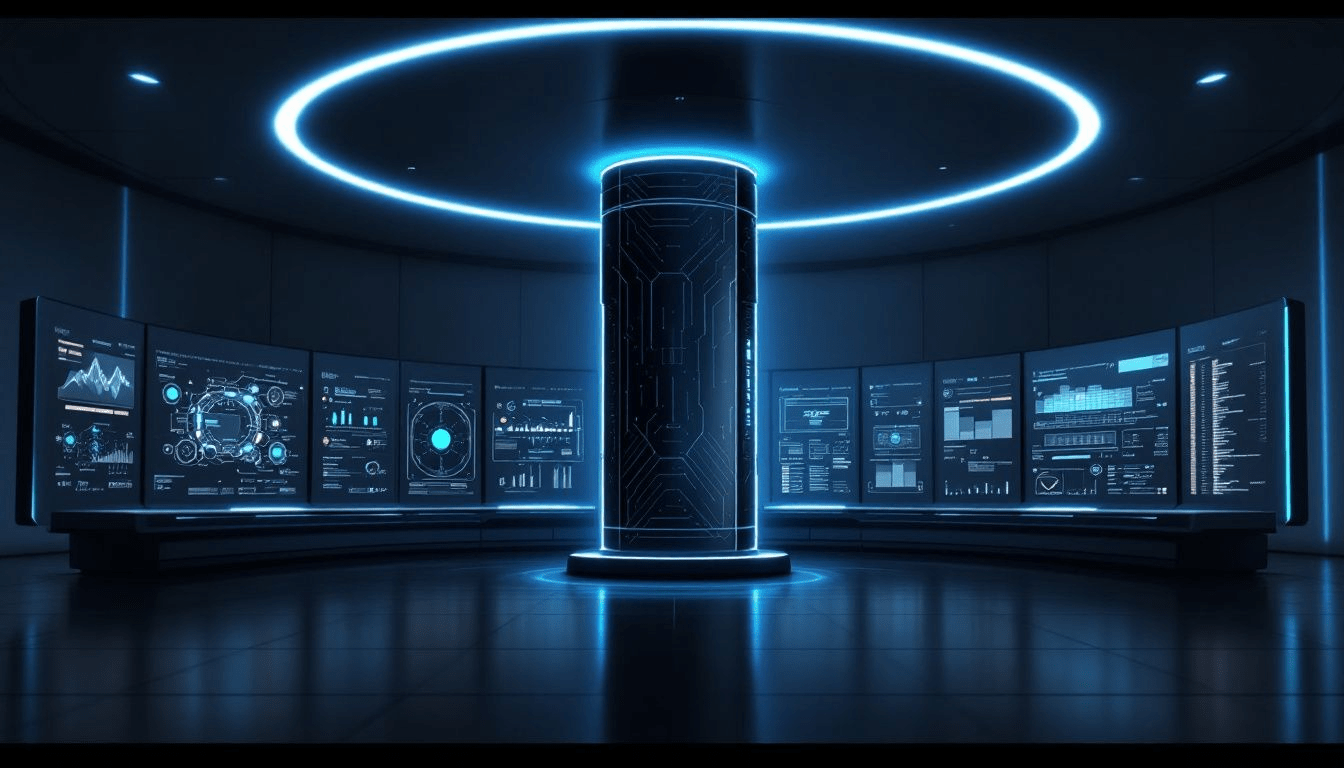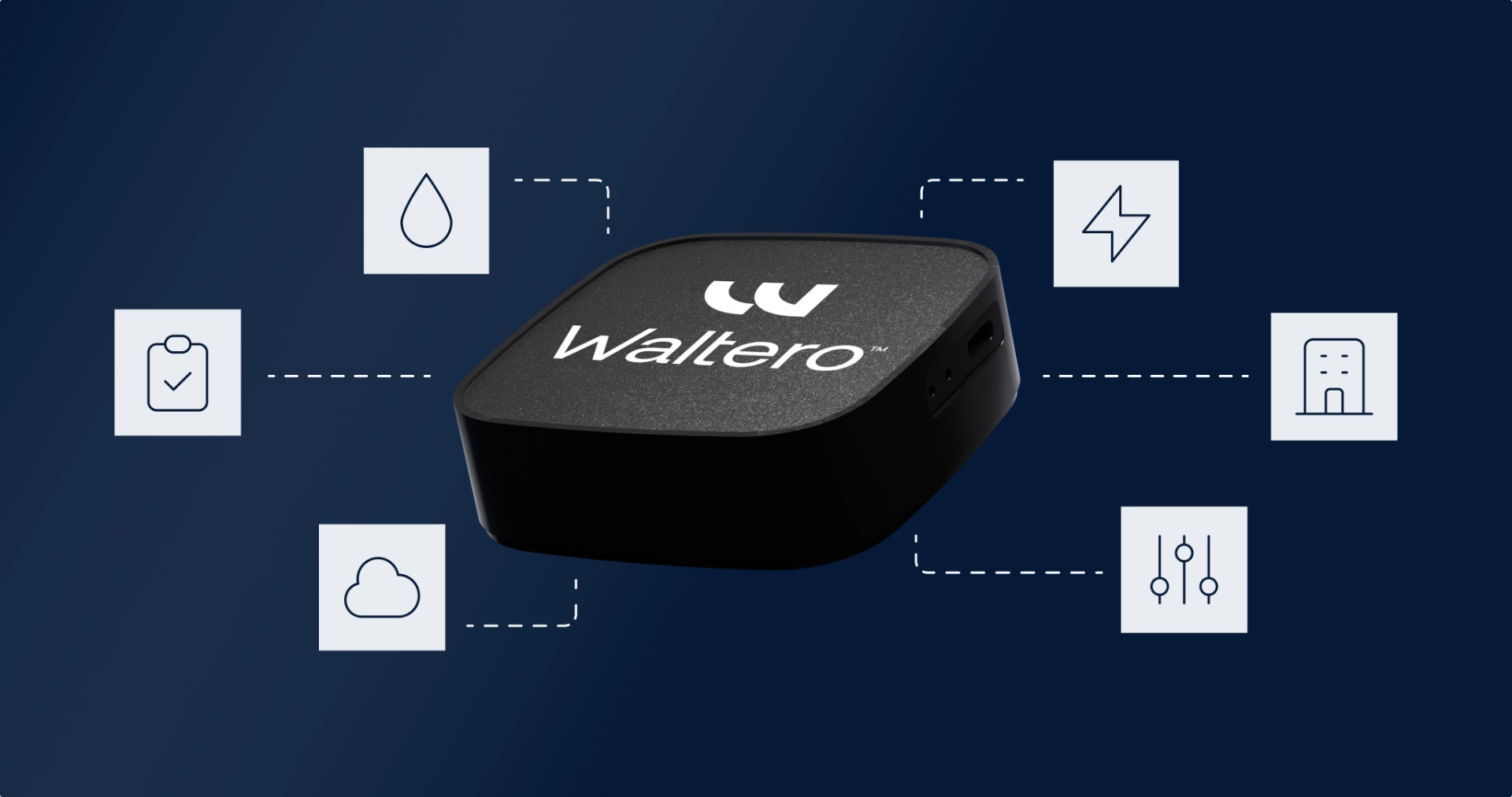A head end system (HES) is the backbone of modern communication networks, tasked with receiving, processing, and transmitting critical signals. Whether for cable TV, internet services, or utility meter data, HES ensures these networks operate efficiently. In this article, we’ll break down what a head end system is, its key components, and its benefits.
Key Takeaways
Head End Systems (HES) are critical for efficient data collection and signal transmission in modern communication networks, supporting services like cable TV and smart metering.
Digital headend systems offer significant advantages over analog systems, including higher channel capacity, superior quality, real-time monitoring, and IoT integration, enhancing operational efficiencies.
Regular maintenance, including real-time monitoring, software updates, and proper temperature control, is essential for ensuring the longevity and reliability of Head End Systems.
Understanding the Head End System (HES)

A Head End System (HES) acts as a central nexus for contemporary communication networks, with its primary function being to automatically gather data from meters at set intervals. Essentially, the headend is the segment of infrastructure or apparatus in charge of receiving, processing, and sending out signals. It’s an essential element across various types of communication systems including cable television services, cellular phones networks and video-on-demand offerings.
The Genus HES exemplifies how these systems are tailored to meet the unique requirements of distribution companies (DISCOMs). They facilitate direct interaction with meters through cellular connections or indirectly via gateways within RF mesh networks. A unified head end system integrates smoothly into a secure IPv6 network environment which enhances consistent and safe meters communications.
Recognizing the significance of these systems illuminates their indispensable role in reliably gathering meter data and managing signal transmissions efficiently.
Key Components of HES
At the heart of every effective headend system (HES) is a complex array of hardware and software elements, each contributing significantly to the streamlined functioning of the system. Hardware devices such as antennas, satellite dishes, and routers constitute the fundamental infrastructure that facilitates uninterrupted data flow in both directions.
These tangible parts are enhanced by advanced software designed for meticulous data analysis and to furnish an all-encompassing interface for data exchange, exemplified by systems like Genus HES.
State-of-the-art digital headend systems extend their capabilities to encompass various offerings including Video On Demand and digital telephony while embracing internet integration to deliver exceptional services with expanded functionalities.
To maintain this integrity within these ecosystems, antivirus programs are incorporated into these systems acting as safeguards against malicious threats that could interfere with signal reception or transmission.
The orchestration between individual components dictates how effectively and efficiently they perform collectively ensuring optimal operation across the entire system.
How HES Acquires Meter Data Automatically
The brilliance of HES stems from its capability to autonomously gather data from meters, an operation enabled through diverse communication techniques such as cellular and RF.
This automatic collection isn’t merely about amassing information—it’s geared towards executing the task with efficiency and precision while reducing manual involvement and the likelihood of mistakes.
By harnessing sophisticated metering infrastructure, HES can effortlessly acquire data from meters, thus offering a dependable base for managing utilities and making decisions informed by solid data.
Advantages of Digital Headend Systems

Digital headend systems represent a considerable advancement over their analog counterparts, delivering a multitude of benefits that enhance both the performance and user experience.
These systems feature increased channel capacity along with exceptional sound and image quality, facilitating the transmission of more content without sacrificing clarity.
They provide support for electronic program guides (EPG) and offer internet access capabilities, furnishing users with an interactive and richer experience.
Incorporating IoT technology into digital headend systems elevates their advantages. By enabling more intelligent data management and instantaneous analysis.
This enhancement not only augments operational efficiency, but also optimizes resource utilization as well as service provision.
Adopting digital headend systems enables organizations to establish communication networks that are highly efficient and effective in meeting contemporary demands for information delivery.
High Channel Capacity and Quality
Digital headend systems are distinguished by their capacity to broadcast a multitude of channels simultaneously while maintaining high-quality transmission.
These digital systems surpass the limitations found in analog counterparts, accommodating an increased quantity of channels and facilitating numerous HD broadcasts without loss of quality.
The shift from analog to digital has significantly bolstered broadcasting capabilities through enhanced modulation methods, leading to improved video sharpness and resolution.
These headend systems employ compression techniques that optimize bandwidth usage and maximize space efficiency.
Such advancements not only save valuable transmission resources, but also incorporate additional sophisticated features like electronic program guides (EPGs), which elevate consumer experiences by offering convenient access to television programming schedules along with other interactive elements.
In essence, the implementation of a digital headend system results in an exceptional viewing experience that aligns with the expectations and demands of contemporary audiences seeking premium picture quality combined with advanced functionality.
Integration with Internet and IoT
Digital headend systems transcend the scope of delivering high-quality broadcasts by incorporating seamless connectivity with Internet and IoT technologies.
This convergence empowers real-time surveillance and management of data, substantially enhancing the effectiveness in overseeing network operations.
The deployment of advanced metering infrastructure informed by IoT technology permits urban centers to supervise and administer utility services more proficiently, resulting in decreased operational expenditures and an elevation in service quality.
Harnessing insights from data analytics represents a transformative shift. By scrutinizing patterns within the data, utility administrators can fine-tune resource distribution, forecast periods of heightened demand, and refine their decision-making strategies.
These analytical capabilities facilitate cost reduction while bolstering reliability and efficiency for consumers.
Adopting digital headend systems that integrate with IoT is a tactical advancement towards intelligent and sustainable stewardship over utilities.
Comparing Analog and Digital Headend Systems

The comparison between headend systems highlights a clear distinction in how they handle signals, particularly when considering analog versus digital.
Analog headend systems are historically reliable but face limitations due to the technology they use, capping channel offerings at 106 and lacking support for high-definition broadcasts.
Consequently, the performance and functional scope of analog headends are notably constrained.
In contrast, digital transmission brings with it an array of advantages that outstrip what is possible with analog systems. Digital headend configurations deliver superior signal quality along with adept management of a greater quantity of channels and accommodate additional service features.
These digital platforms enhance data processing efficiency and bolster overall service provision standards. These enhancements render them the preferred solution within contemporary communication networks seeking higher quality services and improved system performance.
Limitations of Analog Signals
While analog signals were previously the foundation of communication networks, they come with considerable constraints.
Such systems can handle no more than 106 channels and do not accommodate high-definition broadcasts, leading to transmissions of inferior quality.
The restricted dynamic range of these signals renders them less efficient in environments with substantial noise interference, which reduces their performance and functional capacity.
Benefits of Digital Transmission
Digital transmission comes with a multitude of benefits. It delivers improved signal quality, has the capacity to handle a larger number of channels, and facilitates extra services as well as more effective processing of data.
Adopting digital headend systems elevates overall performance and is thus an optimal selection for contemporary communication requirements.
Maintaining Your Head End System

Preserving the integrity and dependability of headend systems is crucial for their extended functionality. Through consistent surveillance, problems can be swiftly pinpointed and rectified, which greatly diminishes the likelihood of service disruptions.
It’s critical to conduct preventive upkeep regularly by examining hardware and carrying out routine data backups, ensuring uninterrupted operation of the system.
Digital headend systems provide protected entry points for activities such as setting adjustments and software upgrades, thereby improving network oversight.
To these measures, possessing effective tools specifically designed for diagnosing network issues is vital in upholding peak performance levels.
By adopting a thorough maintenance approach that encompasses these elements, one can bolster both the resilience and efficacy of headend systems while guaranteeing an ongoing supply of technical support without interruption.
Monitoring Alarms and Alerts
Effective maintenance of HES relies heavily on real-time monitoring. When issues such as loose cables or lost input signals arise, the alarm system integrated within digital headend equipment promptly notifies operators.
This immediate alert facilitates swift problem identification and resolution, averting potential major disruptions.
The implementation of an alert system in preventive maintenance practices substantially contributes to cost reductions by ensuring that issues are dealt with swiftly and efficiently.
Regular Backups and Software Updates
Consistently preserving data to avoid loss and guarantee the recovery of crucial information in the event of system breakdowns is achieved through regular backups. The automation of backup systems facilitates this process by eliminating the need for manual efforts, ensuring continual data safeguarding.
Similarly, it’s vital to maintain software currency as it fortifies defenses against security threats while also boosting system efficiency. Diligent oversight over both backups and timely software upgrades greatly bolsters both the dependability and effectiveness of head end systems.
Temperature Control and Equipment Inspection
Maintaining a head end system necessitates stringent temperature control and consistent examinations of the equipment.
Digital headend control rooms should be kept at an ideal temperature range between 14 to 16 degrees Celsius for peak performance.
Utilizing suitable meters to monitor both temperature and humidity is critical in averting overheating incidents and safeguarding against harm to the apparatus.
Conducting systematic inspections plays a key role in detecting any physical impairments, as well as evaluating potential repair expenses, thereby contributing to both the durability and dependability of the system.
It’s also fundamental to guarantee excellent airflow throughout these spaces while shielding RF cables from pollutants such as dust along with exposure to direct sunlight, all in an effort to preserve the integrity of the equipment.
Waltero’s Smart Metering Solutions
Waltero leads in the evolution of smart metering technology, swiftly transforming standard meters into digital smart meters. Their cutting-edge methods instantly modernize old-style meters to digital versions, facilitating the immediate tracking and management of data.
This improves precision substantially while giving utility companies essential capabilities for optimizing use and identifying leaks.
The progress made by Waltero is laying down a solid foundation for more effective and accurate management of utilities.
Combining Edge AI and Cloud AI
Waltero’s approach combines Edge AI, which allows for instant decision-making by processing data on-site, with Cloud AI that assesses patterns across the system to offer strategic insights and optimize operations over time.
This boosts the efficiency of the entire system significantly. Edge AI facilitates swift reactions due to its local data handling capacity.
By uniting these technologies, Waltero has crafted a dynamic and robust system that revolutionizes infrastructure monitoring and maintenance.
It guarantees heightened efficiency, fortitude against disruptions, and a more intelligent distribution of resources.
Benefits of Real-Time Monitoring
Smart meters facilitate improved infrastructure resilience by providing real-time monitoring capabilities, which allows for rapid reaction to irregularities and better optimization of resources. This strategy leads to a more intelligent distribution of resources, thereby boosting the efficiency of the entire system.
Integrating Edge AI with Cloud AI results in an adaptable and robust system that revolutionizes the way we monitor and upkeep our infrastructure.
It guarantees enhanced efficiency, durability, and more astute management of resources. Waltero’s solutions for real-time monitoring represent the forefront in contemporary utility management practices.
Future of HES with IoT Integration

Head End Systems (HES) will see significant advancements in their utility management functions through the integration with the Internet of Things (IoT), bolstering their efficacy.
By merging Edge AI with Cloud AI, a complete data management system is established, laying a strong groundwork for the expansion of IoT incorporation into HES in times to come.
This unification permits prompt processing of data directly at the site and facilitates swift decision-making. Simultaneously, Cloud AI scrutinizes trends throughout the entire system to provide strategic intelligence that can guide future actions.
Enabling Smarter Utility Management
Advanced digital headend systems facilitate the connection to the Internet and IoT, enhancing the management of utilities within smart cities.
This integration allows for real-time surveillance via sophisticated metering infrastructure, which in turn leads to a more efficient distribution of resources when it comes to managing urban utilities.
Utilizing Edge AI for immediate decision-making alongside Cloud AI for deeper strategic understanding enhances these systems’ ability to react promptly and manage resources effectively.
Analyzing meter data through data analytics is vital, as it offers essential strategic insights that aid in optimizing utility usage.
Strategic Insights from Data Analytics
Smart meters facilitate the enhancement of operational efficiency through real-time monitoring, which in turn assists utilities in achieving their sustainability objectives and adhering to environmental laws.
The immediate data gathered from this monitoring enables utilities to better allocate resources and elevate the quality of service they provide.
The attainment of sustainability targets coupled with adherence to regulatory standards bolsters the strategic standing of utility companies within a fiercely competitive market.
Data analytics is instrumental for deriving long-term optimization strategies and providing valuable insights into managing utility operations.
Summary
In essence, Head End Systems (HES) serve as the vital infrastructure of contemporary communication networks by automating the collection of meter data and facilitating a diverse range of services, including cable television and video on demand.
The shift from analog to digital headend systems has yielded marked enhancements in channel capacity, service quality, and additional advanced features. This progress is driven by their incorporation with internet-based technologies and IoT.
By grasping the essential elements and adopting proper upkeep strategies for HES, companies can maintain peak system performance over time.
Moving forward, it’s clear that HES will continue to thrive with advancements like IoT integration bolstering utility management alongside data analytics providing key operational insights.
Innovations by Waltero in smart meters technology merge Edge AI with Cloud AI to offer real-time tracking capability along with intelligent resource distribution capabilities—paving the way for revolutionized infrastructure oversight.
Organizations that adapt these cutting-edge developments are poised for success within an evolving landscape dominated by digitalization and an emphasis on robust data utilization.
Frequently Asked Questions
What is a head end in networking?
A headend in networking is a facility or equipment that processes and transmits communication signals, such as satellite dishes, receivers, and transmitters.
This crucial component ensures effective signal reception and distribution.
What does Waltero’s monitoring solution combine?
Waltero’s monitoring solution combines Edge AI for speed and precision with Cloud AI for scalability and depth.
This integration ensures an efficient and comprehensive monitoring experience.
What is the purpose of Edge AI in Waltero’s monitoring solution?
Edge AI is implemented in Waltero’s monitoring system to enable swift decision-making by analyzing data on-site, which leads to instantaneous reactions.
What does Cloud AI analyze in Waltero’s monitoring solution?
Cloud AI analyzes system-wide patterns within Waltero’s monitoring solution to deliver strategic insights and facilitate long-term optimization.
What are the benefits of combining Edge AI and Cloud AI in infrastructure monitoring?
Integrating Edge AI with Cloud AI for monitoring infrastructure boosts effectiveness and robustness, as it permits the processing of data in real-time and allows the system to respond adaptively.
Such a combination promotes more intelligent distribution of resources, which significantly improves the management of infrastructure on the whole.

